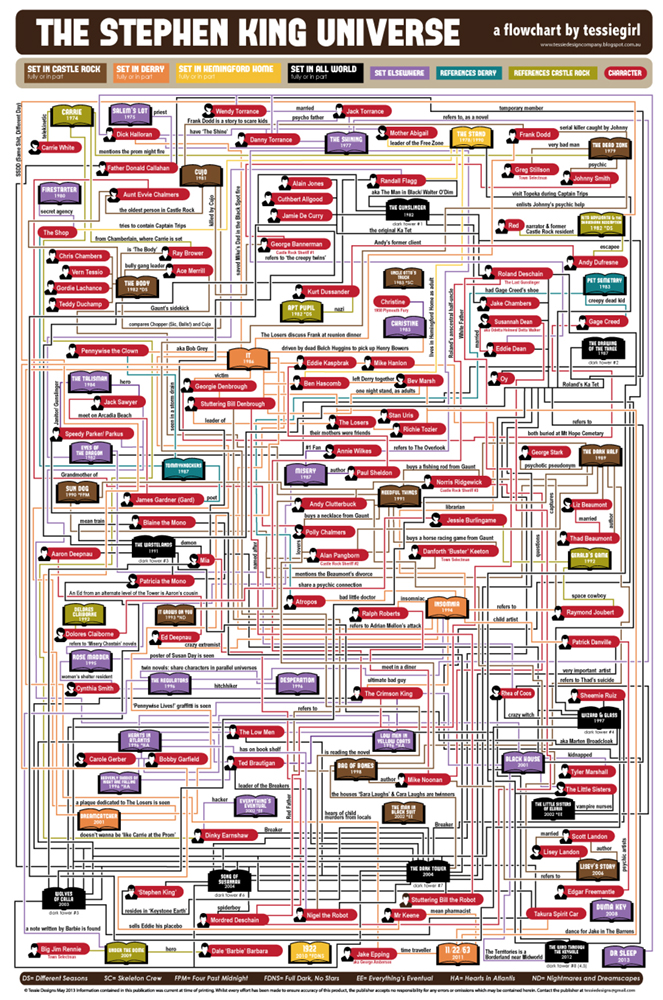VOL.45, NO. 4
Guest Editorial: Audiences and Adaptation
Andrew Scahill
Introduction: Audiences and Adaptation
Recently, my mother paid me a visit to my new home in Denver, and, together, we took a trip to Estes Park, Colorado. This picturesque mountain town is home to the (in)famous Stanley Hotel, Stephen King’s inspiration for the “Overlook Hotel” in his novel The Shining (1977). This novel was, of course, adapted into a feature film by Stanley Kubrick in 1980, now a classic of the horror genre. This visit was a confluence of interests for me and my mother, combining my love for horror cinema and adaptation with her love of all things historical and archival. Perhaps as the deadline for this issue approached, I had begun to see the ghosts of adaptation everywhere around me. But as we walked the Stanley Hotel grounds alongside history buffs, literary pilgrims, and paranormal groupies, I was compelled by the opportunities this space provided to consider the multitudinous dimensions of adaptation, the circularity of adaptation cycles, and the blurry boundary between fan activity and authorized adaptation.

Figure 1: The Stanley Hotel in Estes Park, Colorado. Stephen King was inspired to write The Shining during a stay here in 1974.
In 2015, the Stanley Hotel made a conspicuous addition to its grounds that underscores the feedback process of adaptation and the need to rethink this process beyond the textual and the authorial. That addition, a hedge maze, is meant to recall Kubrick’s film and appease fans by mimicking the visual markers of the fictional Overlook Hotel. To become legible to audiences as the origin text, the physical space of the hotel must become more like its adaptation--or, more accurately the adaptation (film) of the adaptation (novel). Like the hedge maze itself, the process of adaptation is not simply linear, but often proliferous and circuitous. More work needs to be done on physical spaces as adaptations, as museums, fan conventions, and theme park attractions are now a familiar part of the transmedia landscape of adaptation. Indeed, a move towards reception will allow us to better analyze the economic and industrial dimensions of adaptation.

Figure 2: The hedge maze on the front grounds of the Stanley Hotel; the maze was established in 2015 and designed by contest winner Mairim Dallaryan Standing, yet another example of fan-sourced adaptation.
Considering reception also allows us to study authors as audiences. Those familiar with the adaptation history of The Shining are no doubt aware of King’s dissatisfaction with Kubrick’s adaptation, which he maligned as a “cold” and “misogynist” adaptation of his novel (Green). It has been speculated that much of King’s resentment towards the film comes from the extremely personal and autobiographical nature of the novel, which King has admitted mirrored his own alcoholism and repressed rage towards his family during this period. There is an undercurrent of Frankensteinian anxiety in King’s early work about losing control of one’s progeny--an alter ego in The Dark Half (1989), a repaired automobile in Christine (1983), a child in Firestarter (1980) and Pet Semetary (1983). This author anxiety is writ large in Misery (1987), as King stand-in Paul Sheldon must reckon with “number-one fan” Annie Wilkes, who imprisons him and forces him to adapt his own novel according to her vision. In 1997, King would option a TV miniseries of The Shining more faithful to his original novel, arguably an attempt to reclaim meaning for a lost text. How do we conceptualize this act in the landscape of adaptation studies without thinking of the audience? What does it mean for the literary author to become an audience to her/his own work and to find it unrecognizable?
The last two years have seen the adaptation of his novels Gerald’s Game, 1922, It (adapted as two films), and The Dark Tower series set for franchise. In the same two years, his writing has been adapted into the television programs The Mist (Spike TV), Mr. Mercedes (Audience Network), and 11.22.63 (Hulu). Following an early screening of It: The Loser’s Club (2017), King took to Twitter to reassure his fans that he approved of the film, stating “Andy Muschietti's remake of IT… succeeds beyond my expectations. Relax. Wait. And enjoy,” (March 7, 2017). King’s direct address to his fans suggests a complex relationship between origin text author, adaptor, and audience. In many cases, the adapted becomes both audience and authorizer in the industrial practices of adaptation. Recall Anne Rice’s curt disapproval of the film Interview with a Vampire (1994) followed by a full New York Times advertisement touting her approval, and we begin to see the economic “stakes” (groan) in the rapport between author and audience. For the upcoming adaptation of The Dark Tower, King was given the role of premiering the poster for fans on Twitter becoming at once an intermediary between filmmakers and fans, a gatekeeper of approval, and a marketing agent (March 19, 2017).
Finally, studying reception can help us analyze contemporary modes of revision that look less like the direct text-to-text adaptations that have dominated discussions in the field, and more like radical revisions, alternate realities, and origin texts as settings for expansive exploration and world-building. That is to say: adaptations that look like fan fiction. Case in point: the upcoming series Castle Rock (Hulu) is not so much a direct adaptation as it is a Twilight Zone-esque show set in the Stephen King universe, including characters and entities from the writer’s best known works (titles mentioned include It, Dolores Claiborne, Needful Things, 'Salem's Lot, Rita Hayworth and Shawshank Redemption, and The Shining). Such an approach is an unfamiliar mode for television writing, but entirely recognizable as a mode of fan fiction. Indeed, producers were likely inspired the longstanding ruminations on a Stephen King Shared Universe (SKSU) by readers, leading several fans to create elaborate maps of proposed interrelationships. The Stephen King Shared Universe promised in Castle Rock recalls many of the hallmarks of fan production: textual poaching, crossover and intertextual dialogue, narrative expansion and exploration. King himself seems to have taken note: over the last decade, the author has begun sprinkling references to his previous works throughout his more contemporary novels, opening the door for a Marvel-esque juggernaut of multi-textual storytelling.

Figure 3: A map of the Stephen King Shared Universe, as mapped by fan “tessiegirl” and posted on her blog http://tessiedesigncompany.blogspot.com/.
LFQ has always been on the forefront of research into adaptation, and this issue continues that tradition by offering exciting new perspectives on the participatory nature of reception. Kyle Meikle begins this issue with “A Theory of Adaptation Audiences,” an ambitious work that gestures towards a phenomenology (or an “epiphenomonology”) of adaptation. As Meikle says, “what is lacking is a better sense of experience, of what it means to experience adaptations as such in the moment of playing, reading, or watching.” As such, it serves as an exceptional opening salvo for this issue. In “Now Playing with Coming Soon,” Matthew Ogonoski examines the fan practice of “sweding” trailers as a mode of reiteration that is simultaneously “participatory, exploitive, and subversive” of Hollywood production and transmedia flow. Walter Metz offers our first case study in “‘Unfriending’ Hawthorne,” an examination of Easy A and The Scarlet Letter which dismantles singular text-to-text analysis by exploring the complex interplay of intertextuality, teen pic tropes, and audience engagement. In “45 Years and 'In Another Country',” Suzanne Ferris patiently examines the adaptation of David Constantine’s short story, whose central image of glacial ice provides a kind of reflective surface for the audience to question the nature of marriage, authorship, and meaning itself. In “‘It Ain’t for Children,’” Michele Meek examines the representations of child abuse in Precious and Bastard Out of Carolina and asks how the translation from novel to film also demands a shift in the affective relationship between protagonist and audience due to the unrepresentability of child sexuality on screen. Finally, this issue ends with Laurence Raw, whose case study “Audiences, Literacies and Adaptations” turns to the notion of active literacies to examine Turkish film and television, whose transnational adaptations provide fascinating opportunities for identity formation and “recognition talk” among its fans.
I want to close with a word of thanks to Elsie Walker and Dave Johnson for their mentorship during my time as Assistant Editor at LFQ. Though I have taken a new position at the University of Colorado Denver, I have benefitted greatly from the experience, and I am honored to serve as Guest Editor for this issue.
Works Cited
Greene, Andy, “Stephen King: The Rolling Stone Interview,” Rolling Stone (October 31, 2014). http://www.rollingstone.com/culture/features/stephen-king-the-rolling-stone-interview-20141031. Accessed 29 July 2017.
@stephenking, “Andy Muschietti's remake of IT (actually it's Part 1--The Losers' Club) succeeds beyond my expectations. Relax. Wait. And enjoy.” March 7, 2017
@stephenking, “Pilgrim, there are other worlds than these. Come with us on the adventure.” March 19, 2017